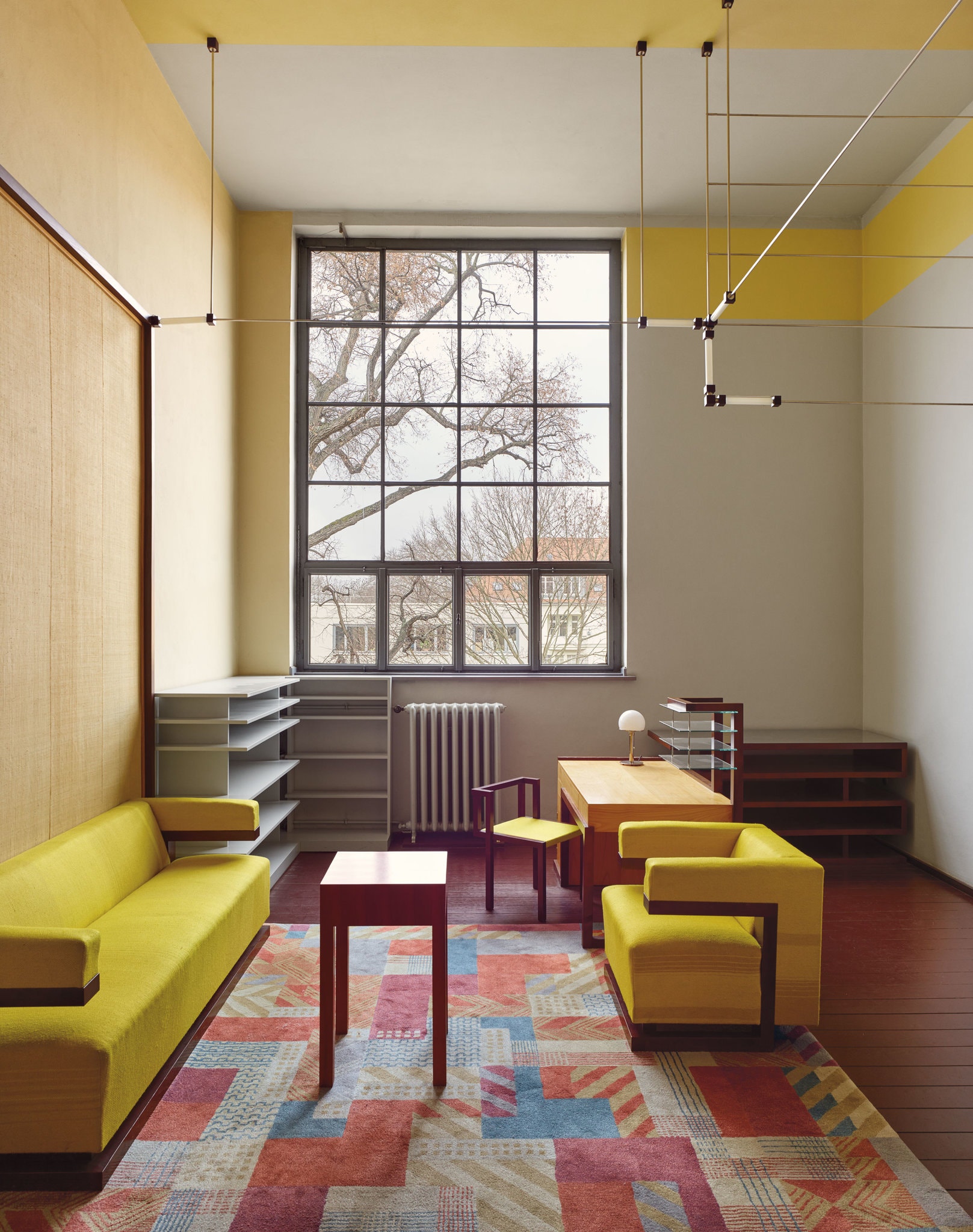CULTURAL SERVINGS:
EPHEMERAL ECHOES
EDWARDIAN PURSE
SCRIMSHAW AND LOVE TOKENS
PILCHARDS AND TROYL
BELTS
LEATHER TANNING
BEER TIME
BEER MATS
LUNCH BOX
SLOW MOVEMENT
SUMMER HEAT
NATURAL DYES
FRAKTUR ART
THE CRIES OF LONDON
SHAKER FURNITURE
BAUHAUS BRUTALISM
BAUHAUS INTERIOR
BAUHAUS SPIRIT
BAUHAUS HISTORY
ROMANTICISM AND REVIVAL
HISTORY OF THE MUSEUM
CABINETS OF CURIOSITY
BAUHAUS HISTORY




THE FOUNDING
In 1919, German architect Walter Gropius established the Bauhaus (literally translated to Construction House), a school dedicated to uniting all aspects of the arts under one roof. The school acted as a hub for Europe’s most experimental creatives, with well-known artists like Josef Albers, Wassily Kandinsky, and Paul Klee offering their expertise as instructors. It was described as a ‘utopian craft guild' that combined architecture, sculpture and painting into a single creative expression.
The cabinetmaking workshop was one of the most popular at the Bauhaus. Under the direction of Marcel Breuer from 1924 to 1928, this studio re-conceived the very essence of furniture, often seeking to dematerialise conventional forms such as chairs to their minimal existence. Breuer theorised that eventually, chairs would become obsolete, replaced by supportive columns or air. Inspired by the extruded steel tubes of his bicycle, he experimented with metal furniture, ultimately creating lightweight, mass-producible metal chairs. Some of these chairs were deployed in the theatre of the Dessau building.
WEIMAR, DESSAU, BERLIN
Bauhaus, as an art institution, existed for 14 years, relocating to a new city every few years as their ideals became too controversial for the cities that housed them. Between 1919 and 1925, the Bauhaus resided in Weimar, where ‘stage workshop’ was an important part of education. Students were encouraged to merge their practises of visual and performing arts into one, becoming an interdisciplinary approach.
In 1925, Bauhaus relocated to Dessau and remained there until 1932. Dessau was considered the heyday of Bauhaus as it arose after the politically motivated close of Weimar. Students now felt that they had a purpose to fight for, manifestos were introduced, in which the Bauhaus vowed to design functional and beautiful products for mass production.
Berlin housed the Bauhaus in 1932 and 1933, and was the place where the institution grounded to a halt. Due to mounting pressures from the Nazis and cutbacks in funding, students and teachers moved from Dessau to an abandoned telephone factory on the outskirts of the capital. However, the premises were discovered and closed by the SA in 1933. After this, the teaching staff decided to dissolve the school. Although the Bauhaus no longer existed as a physical institution, its legacy and influence burnt bright, lighting the flame for the Bauhaus movement which flourished in spite of the school’s closure.
POST-CLOSURE
During the turbulent and often dangerous years of World War II, many of the key figures of the Bauhaus emigrated to the United States, where their work and teaching philosophies influenced generations of young architects and designers. Breuer and Gropius taught at Harvard. Josef and Anni Albers taught at Black Mountain College, and later Josef taught at Yale. Moholy-Nagy established the New Bauhaus in Chicago in 1937 and Mies van der Rohe designed the campus and taught at the Illinois Institute of Technology.
Today, Bauhaus is often credited as the catalyst for modern architecture and furniture and as an important influence on mid-20th century painting and sculpture. Some buildings—including Bauhaus Dessau—have been turned into tourist destinations and house museums, while many major modern art museums incorporate the works of art into their permanent displays and popular exhibitions.